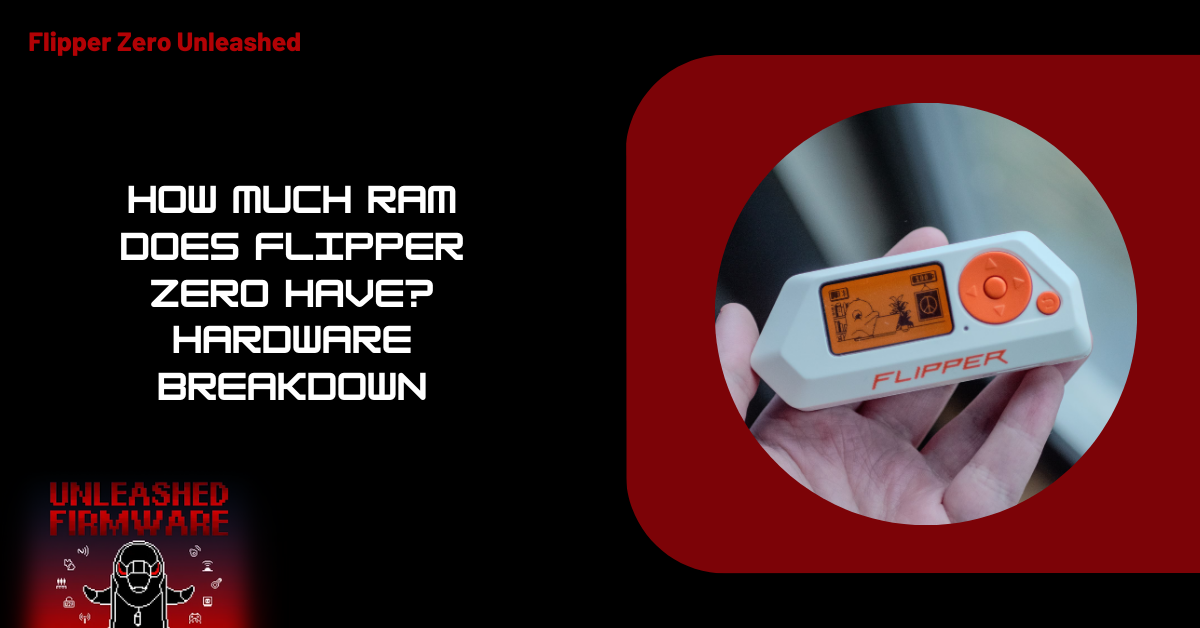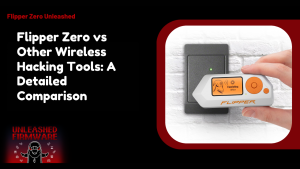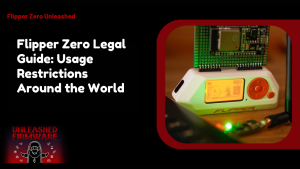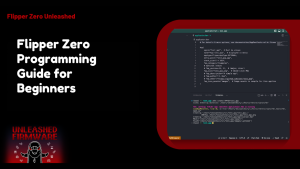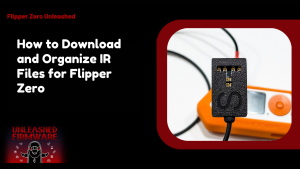Table of Contents
ToggleIntroduction: RAM Requirements for a Flipper Zero
Ever wondered how a device that fits in your pocket can pull off so many tricks? Well, you’re not alone. With over 1.2 million Flipper Zero units sold worldwide as of early 2025, this open-source hacking tool has taken the tech world by storm. One of the most frequent questions users ask is, “How Much RAM does Flipper Zero have?” And let me tell you, the answer is pretty fascinating for a geeky little dolphin.
In short, the Flipper Zero has 256 KB of RAM. But don’t let the small size fool you—this RAM is tightly integrated with its STM32 microcontroller and works in surprisingly efficient ways.
Key takeaways:
- Flipper Zero includes 256 KB of SRAM integrated into its STM32 MCU.
- It also has 1 MB of flash memory for storage.
- RAM is used for real-time operations, temporary data, and plugins.
- Custom firmware may affect RAM allocation and performance.
- You can’t upgrade RAM, but you can optimize its use with smart tricks.
What is RAM and why does it matter for Flipper Zero
RAM (Random Access Memory) is a crucial component in any computing device, even one as compact as the Flipper Zero. It temporarily stores active data that the processor needs quick access to, allowing your device to execute tasks efficiently. In the Flipper Zero, RAM supports a wide range of functions—from emulating RFID signals to interacting with infrared, NFC, GPIO, and more.
How RAM affects device performance
RAM ensures the Flipper Zero runs multiple tasks seamlessly, such as switching between signal modes or storing short-term data from your IR remote scans. When you’re using apps, plugins, or scripts, RAM keeps everything responsive. Too little RAM could mean system crashes or lag, but Flipper Zero balances its resources surprisingly well given its limitations.
RAM vs Flash: What’s the difference?
Flash memory on Flipper Zero stores long-term files—like your saved scripts, signal databases, and plugin binaries. RAM, on the other hand, is all about the here-and-now. It handles temporary operations, real-time execution, and background tasks. Think of RAM as your brain’s short-term memory and flash as your long-term memory bank.
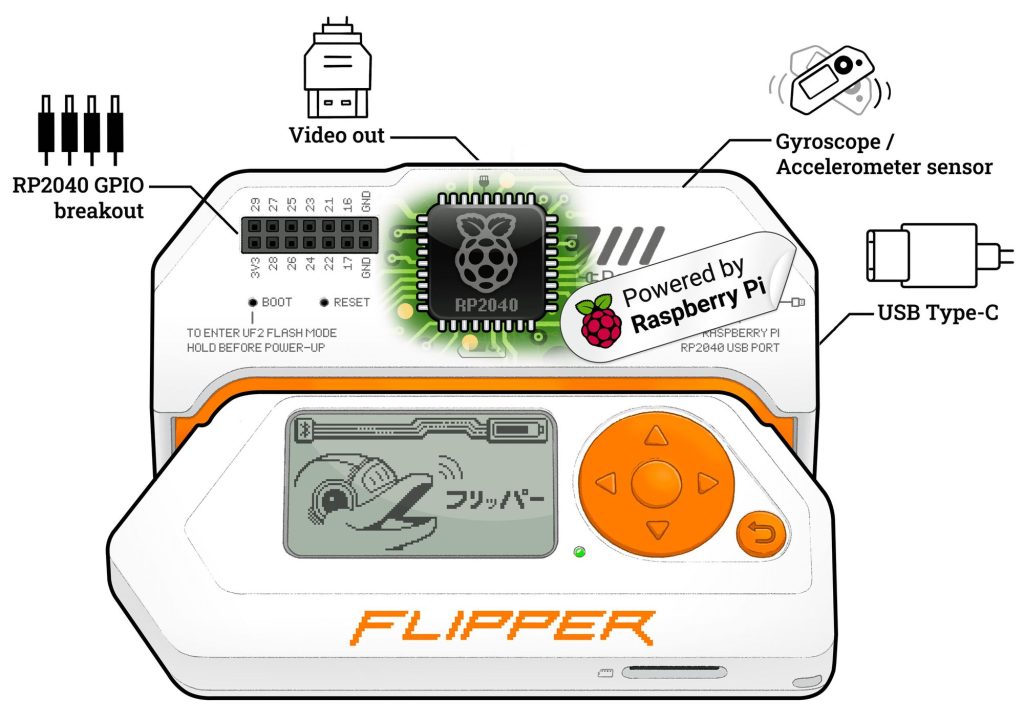
How Much RAM Does Flipper Zero Have?
The Flipper Zero comes equipped with 256 KB of SRAM. This RAM is built directly into the STM32WB55 microcontroller, a dual-core MCU that also includes integrated Bluetooth and RF support. While 256 KB might sound tiny by smartphone standards, it’s actually ample for microcontroller-based devices, thanks to the highly optimized embedded firmware.
MCU and memory architecture explained
Flipper Zero uses an STM32WB55RG MCU, which combines an ARM Cortex-M4 and Cortex-M0+ core in one chip. The M4 core handles user tasks while the M0+ handles the Bluetooth Low Energy (BLE) stack. Of the 256 KB RAM, 192 KB is accessible to the application layer (i.e., your tasks and plugins), while the rest is reserved for Bluetooth and system functions.
What part of RAM is used by custom firmware?
If you’re using firmware like Flipper Zero Unleashed, be aware that additional features and UI enhancements can eat into available RAM. These firmware variants often include extra protocols, games, and plugins that need to be loaded into memory at runtime. That said, they’re usually coded with memory efficiency in mind to avoid overloading the system.
Can you upgrade the RAM on Flipper Zero?
Technically speaking, no—you can’t increase the onboard RAM. The 256 KB of SRAM is fixed in the MCU silicon. However, users have found creative workarounds using expansion modules, SD cards, and external gadgets to store or offload data.
Using external storage or expansion boards
While these don’t increase RAM per se, modules like the Flipper Zero Dev Board offer a sandbox for interfacing with extra memory chips, flash storage, or even an ESP32 for offloading processing tasks. An SD card can also be used to load scripts and payloads on demand, helping free up RAM space for more dynamic functions.
Flipper Zero RAM vs other similar devices
So how does Flipper Zero’s memory hold up against other tools in the hacking and cybersecurity world? Pretty well, actually. While its 256 KB RAM is modest, the device makes excellent use of it through efficient firmware and optimized tasks.
How it stacks up in performance
Compared to tools like Rubber Ducky (which doesn’t need much RAM due to its simple scripting engine) or Proxmark3 (which uses an external FPGA and more RAM), Flipper Zero strikes a balance. It’s more powerful than Rubber Ducky in terms of multitasking, and far more user-friendly than Proxmark3. Devices like Pwnagotchi have more RAM but require full OS environments.
Why RAM size doesn’t limit Flipper Zero’s potential
Despite its limited RAM, Flipper Zero accomplishes a lot. That’s because it leans into task-specific microcontroller design rather than trying to be a general-purpose computer. You won’t be browsing the web or running Linux on it—but you will be spoofing signals, analyzing RF bands, and playing Snake in between.
Smart memory management through firmware
The Flipper team has done an amazing job optimizing the memory map. Tasks are tightly scheduled, memory leaks are minimized, and plugins are sandboxed. Even custom firmware like Unleashed or Xtreme are built to run within tight limits without crashes.
When less is more in embedded hacking
More RAM doesn’t always equal better performance. Flipper Zero proves that with clever firmware and task handling, even 256 KB can go a long way. Most of its magic lies in the firmware design, user creativity, and the active dev community who knows how to make every kilobyte count.
Final thoughts on Flipper Zero’s RAM
So, we’ve answered the big question: how much RAM does a Flipper Zero have? And more importantly, what does it do with it? Despite its modest 256 KB, the device runs like a champ thanks to efficient coding and community support.
My Opinion
Honestly, I’m impressed by how much this little dolphin can juggle. Flipper Zero is a masterclass in micro-efficiency. Instead of craving more RAM, I say let’s admire what can be done with less. A powerful lesson for any developer or tech lover out there.
Want to learn more about hardware? Dive into Flipper Zero Dev Board or explore the coolest Flipper Zero Addons you can pair for even more functionality.
FAQs About Flipper Zero RAM
Can I upgrade the RAM in Flipper Zero?
No. The RAM is embedded within the MCU and is not upgradable.
Is 256 KB enough for custom firmware?
Yes. Most popular firmware versions are optimized for this limit.
Does adding an SD card increase RAM?
No, but it helps with storage and managing scripts or payloads.
How does Flipper Zero manage memory?
It uses optimized embedded firmware and allocates RAM dynamically per task.
Will future models have more RAM?
Possibly. As the Flipper community grows, so will hardware ambitions.
Latest Posts:
